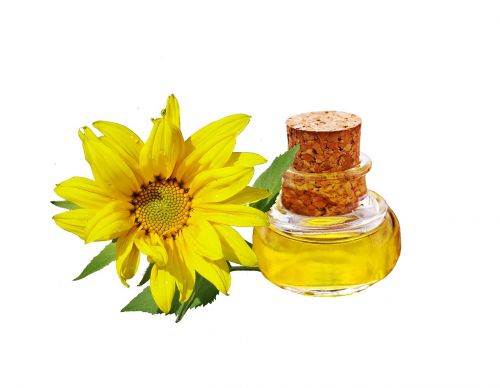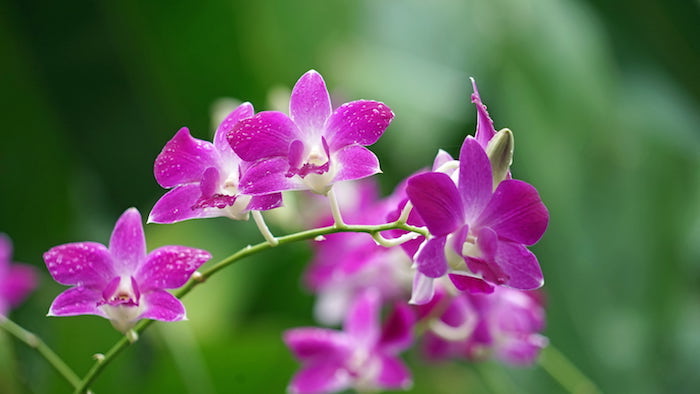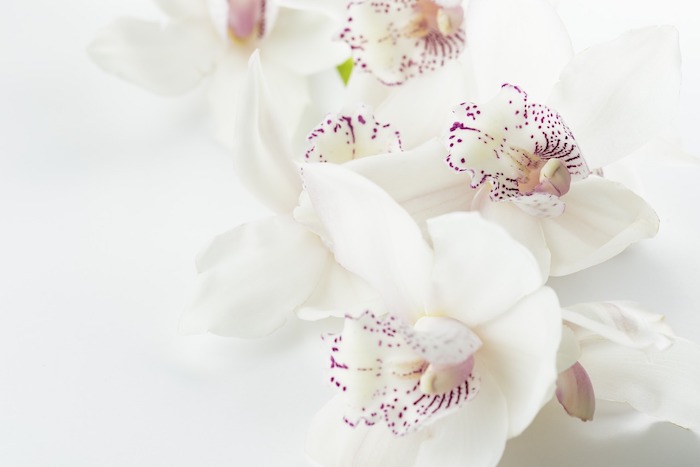Orchids are a treat for the eyes, but did you know that they may also be a delight for your taste buds. If you are an Orchids fan then you have probably heard about some edible species used as a part of culinary delights and medicinal uses in different countries around the world. For e.g. the ancient Greeks believe that consuming the bulb of orchid plants can improve their fertility and sexual vigor.
So, Can you eat Orchids? I would say both Yes and No. The journey of these plants from the garden or patio to the dining table is not that easy. In various parts of the world, different species of Orchids are used for making cakes, cocktails, ice cream, and so on. However, there are also some toxic species that you must be aware of.
Vanilla the most well-known edible species of Orchids and it has been a part of people’s diets for a long time. People from countries like Hawaii, Singapore, Middle East, and Turkey use Orchids for preparing a wide range of traditional cuisine. Those who are not picky eater can eat almost every part of an Orchid plant. For others, flowers are the most edible part.
In this post, we will learn more about the different edible parts of Orchids, how they are used for making delicacies, and other things you must know. First, let’s take a look at the various uses of Orchid:
Six Interesting Uses Of Orchids
Tea, Cakes, Tempura, and Desserts
The Dendrobiums blooms are not consumed in their natural state as they may irritate the stomach. The canes and flowers are dried and then they are steeped in hot water to make tea. In Asian culture, these Orchids are typically used for garnishing cakes and cocktails. They may also be added to stir-fries and sauces.
The dendrobium orchid flowers may also be wrapped in egg and flour batter, and deep-fried in oil to create crunchy Orchids tempura. In Hawaii, they use the flowers in fresh salads and even sugar coat them to include in desserts.
Hot Drink Made from Salep
Salep is a unique byproduct of the Orchid plant, made by drying out the rubbers and then grinding them to form a fine powder. This powder is often used as a popular ingredient when preparing drinks, bread, and desserts. Salep is often used to create a hot beverage found in Greece, Turkey, Germany, and many Asian countries.
To prepare the drink, Salep powder is mixed in hot milk and then it is flavored with a little nutmeg, cinnamon, and ginger. However, it’s overuse has made the governments in certain countries ban their export to conserve the wild orchids population.
Ice Cream
Again the salep formed from Orchid bulbs are often used for making a type of food known as dondurma, also known as Turkish orchid ice cream. This special ice-cream is much different from the regular ice-cream you get in the stores. It is chewy in texture and does not melt easily.
This type of ice cream is often compared with saltwater taffy. As it is made from milk, salep, sugar, and mastic, it gets a chewy texture. You can find this unique Orchid ice-cream in countries like Turkey and Greece. It is often called a Kaimaki or Dudurmas.
Salads and Candies
There are several stories of culinary adventure by the Hawaiian people who are known to eat the flowers as long as the 1960’s. Different parts of the plant were used in making salads and Candies. People in Singapore also mixed orchid flowers with meat and vegetables to prepare exotic dishes.
In the Middle East countries, people use orchid bulb (Salep) s to flavor ice creams. In South Africa too, Orchid tubers are used to flavor the meat sauces. Due to a rise in demand, the wild Orchids are threatened in this part of the world.
Making Olatshe
This is a popular Bhutan dish that forms an integral part of the local diet and orchids is an important part of the delicacy. It typically uses a species called Cymbidium hookerianum. The bulbs are flowers are first remove from the talk, washed, and boiled in water.
After draining flowers, it is mixed with melted cheese, spices, and salt. The spices are used to offset the bitterness of Orchid flowers. Another five minutes of cooking and your Olatshe is ready to be served with rice or noodles.
Vanilla flavors
This is perhaps the most known and widely used application of Orchids. Vanilla extracted from Orchids is used for flavoring beverages and foods. Yes, it’s that Native to Central and South America, when vanilla was introduced in Europe several centuries ago, it was known as an aphrodisiac.
People believed that Vanilla has therapeutic values and it also help in healing headaches and indigestion. Due to its widespread use, the Vanilla planifolia orchid variety is the only species that is propagated for commercial food production.
Facts To Know Before Eating Orchids Orchids
#1. Orchids are used for making medicines
Many people are not aware that Orchid plants are also popular for their medicinal value. As mentioned above, the ancient Greeks used it to boost fertility. In traditional Chinese medicine, several parts of the plants are used to preparing medicines to treat various eye diseases.
The Dendrobium blooms are widely used in Asian herbal medicine as an effective treatment for headache, indigestion, cancer, and convulsions. As the flowers are rich in fiber, they are also considered as good for digestion and Vitamin C is used to strengthen the immune system.
#2. Never consume Orchids in its natural state
It’s true that Orchids are often used for garnishing dishes and often used as an ingredient in fresh salad. However, the fact is that Orchids should not be eaten in their natural state. It should e remembered that there are thousands of hybrid Orchids that are not tested and may cause stomach irritation ingested raw.
To be on the safe side, the Orchids are first dried and then steeped in hot water for making tea. In other type of cuisine, the flowers may be battered and deep-fried and stir-fried with other ingredients. So, even though these flowers form a delicious treat for your taste buds, you should exercise caution while eating.
#3. Sufficient research is necessary
While most of the common species of Orchid plants are non-toxic, it should not be forgotten that there are approximately 100,000 hybrids and crossbreeds. Hence, it is recommended that you do not eat any part of an Orchid plant without doing sufficient research.
If you bring home a household plant, find out the name of the species, whether it is a natural genetic plant or a cross-bred species. While eating Orchids are not fatal for humans, they might cause irritation in the stomach, indigestion, or skin rashes.
5 Other Edible Flowers Besides Orchids
Edible flowers are not a new thing and they have been used for a long time in various ancient cuisines across the world. With more daring chefs trying to inculcate the blooms in more creative ways to attract adventurous eaters, they are gaining a lot more popularity these days. Here are some other edible flowers (other than Orchids) you can expect to find on your plate.
#1. Daylilies
These flowers are not only adorable but also edible. In the Asian cuisine, all parts of the plant from flowers and buds to stalks, and root bulbs are considered delicious and safe to consume. You may add them to fresh salads for that extra color effect or use then for making fritters and stir-fries. The tubers may be boiled as potatoes.
#2. Lilacs
Their refreshing appearance and sweet floral fragrance can make you go crazy. If that’s not enough, try a help of these beautiful blossoms in making a great base for puddings, sorbets, jams, cakes, custards, and ice creams. The flowers can be used both for garnishing and as a flavoring agent. In the ancient medicines, lilacs were also used for various diseases.
#3. Sunflowers

You have probably already heard about sunflower oil extracted from the seeds. Do you know that the petals may also be used for adding a grassy flavor to various dishes? The bright petals can add a dash of bright color to the salads. The stalks taste like celery and go well with hummus or peanut butter. The roots may be fried, roasted, steamed, or even consumed raw.
#4. Tulips
Tulips have a similar flavor like the Orchids and their cup-like shape make them perfect to be used as a container for packing ice cream or salad. If not treated with chemicals, the petals taste great and look great as garnishes too. However, we would suggest that you avoid consuming bulbs, leaves, and stems as they don’t taste as good and bulbs may at times be poisonous.
#5. Roses
This is our star in the list and the subtle flavor is almost like green apples and strawberries. The sweet tones coming from the blossoms range from mint to spice. While most rose species are edibles, the darker varieties are known to be more delicious, often used as a garnish in desserts and ice-creams. After removing the bitter portion of petals, they can use used in jellies, syrups, butter, spreads, and fruit punches.
Related Questions
What is the taste of Orchids?
The taste of different parts of Orchid plants may vary and they are often described ranging from sweet to bitter. All the commonly known Orchids (excluding hybrids) are safe for consumption. They are a rich source of fiber, hence they help with digestion. They also contain Vitamin C that improves immunity.
Are Orchids an acquired taste?
Yes, not everyone will like the taste of Orchids. Some people may think it’s a pity to eat these beautiful and delicate flowers. However, it’s worth noting that there are dedicated farms to cultivate edible Orchids that are used for cooking.
Are Orchids toxic for your pets?
If you have pets at home and you are constantly worried about them falling sick by nibbling on the plants then put your fears to rest. Eating the flowers or leaves of most of the common Orchid houseplants will not harm your kitty, unless it is a hybrid unknown species. So, even though they are not harmful we suggest that you keep pets away from your Orchids.
See more: Are Orchids Poisonous (Human&Pets)
What are the positive health benefits of Orchids?
Besides serving as a great visual treat, a tasty garnish, and amazing ingredient, having them around has several positive benefits. Studies have shown that Orchids help in improving air quality, reducing stress, boost concentration, decrease seasonal flu, and improve healing.
Related Articles:
How To Care For Orchids In A Vase
7 Ways On How To Keep Orchids Alive
How To Water Orchids In Moss


